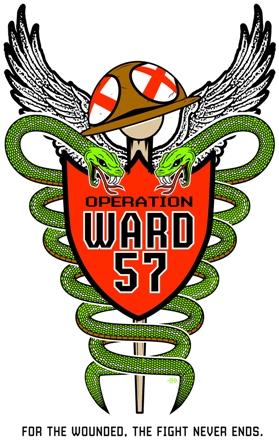Causes: Group Homes, Human Services
Mission: In a given year, over 1.35 million children are estimated to experience homelessness in America. Homeless children are now among the fastest growing segments of the homeless population. Federal legislation broadly defines homeless children as individuals who lack a fixed, regular, and adequate nighttime residence. This definition not only includes children living in shelters, but also those living in cars, motels, trailer parks, substandard housing, shared housing (due to the loss of housing or economic hardship), and other places not ordinarily used as sleeping accommodations for humans. According to the most recent data available, 25% of homeless students resided in shelters and 50% resided in doubled-up situations. In the 1980''s and 1990''s, federal response to the growing crisis of homelessness in America led to the awareness that only 55% of homeless children (K-12) were regularly attending school. Data from 2000 reveal that 77% of homeless children (K-12) were regularly attending school, and 15% of homeless preschool children were enrolled in school programs. Although the 2000 data has shown significant progress in the attendance of K-12 students, one out of every four homeless children is still not attending school and six out of every seven preschool children are not enrolled in early learning programs. Undoubtedly, much work remains to be done. Compared to their peers, homeless children are more likely to suffer from health problems, developmental delays, learning disabilities, emotional difficulties, and mental disorders. Furthermore, the high mobility associated with homelessness has been shown to negatively impact a child?s education. Research findings on mobility and academic achievement reveal that compared to their housed peers, mobile students are half as likely to graduate from high school and twice as likely to repeat a grade. NAEHCY''s mission is to connect all those working in homeless education - educators, advocates, researchers, parents, policy makers, and service providers - in the effort to ensure the academic and overall success of all children in homeless situations. We fervently believe that education is vital to breaking the cycle of poverty and homelessness; therefore, we work to ensure that vulnerable children receive an education and be afforded the greatest opportunity to succeed in life.
Programs: NAEHCY's programs include:(1) Organizing an annual national conference convening educators, advocates, researchers, and service providers to provide professional development and networking opportunities in addressing the educational needs of homeless children(2) Administering the LeTendre Education Fund, which is a scholarship program for homeless youth who have demonstrated academic achievement and are pursuing higher education(3) Monitoring and analyzing legislation impacting the education of homeless children (e. g. Head Start, IDEA, McKinney-Vento)(4) Developing position papers, policy recommendations, and advocacy tools for members, stakeholders, and national partner organizations(5) Communicating with Congressional offices and federal agencies to advance NAEHCY's recommendations(6) Collaborating with national organizations such as housing, homeless, domestic violence, education, child welfare, and faith-based organizations on policy strategy and action(7) Providing professional development training at 60-70 national, state, and local conferences per year, including local Head Start agencies, school districts, homeless coalitions, statewide homeless liaison conferences, and national conferences such as Title I, Head Start, Health Care for the Homeless, Runaway and Homeless Youth, and National Network for Youth.
Mission: In a given year, over 1.35 million children are estimated to experience homelessness in America. Homeless children are now among the fastest growing segments of the homeless population. Federal legislation broadly defines homeless children as individuals who lack a fixed, regular, and adequate nighttime residence. This definition not only includes children living in shelters, but also those living in cars, motels, trailer parks, substandard housing, shared housing (due to the loss of housing or economic hardship), and other places not ordinarily used as sleeping accommodations for humans. According to the most recent data available, 25% of homeless students resided in shelters and 50% resided in doubled-up situations. In the 1980''s and 1990''s, federal response to the growing crisis of homelessness in America led to the awareness that only 55% of homeless children (K-12) were regularly attending school. Data from 2000 reveal that 77% of homeless children (K-12) were regularly attending school, and 15% of homeless preschool children were enrolled in school programs. Although the 2000 data has shown significant progress in the attendance of K-12 students, one out of every four homeless children is still not attending school and six out of every seven preschool children are not enrolled in early learning programs. Undoubtedly, much work remains to be done. Compared to their peers, homeless children are more likely to suffer from health problems, developmental delays, learning disabilities, emotional difficulties, and mental disorders. Furthermore, the high mobility associated with homelessness has been shown to negatively impact a child?s education. Research findings on mobility and academic achievement reveal that compared to their housed peers, mobile students are half as likely to graduate from high school and twice as likely to repeat a grade. NAEHCY''s mission is to connect all those working in homeless education - educators, advocates, researchers, parents, policy makers, and service providers - in the effort to ensure the academic and overall success of all children in homeless situations. We fervently believe that education is vital to breaking the cycle of poverty and homelessness; therefore, we work to ensure that vulnerable children receive an education and be afforded the greatest opportunity to succeed in life.
Programs: NAEHCY's programs include:(1) Organizing an annual national conference convening educators, advocates, researchers, and service providers to provide professional development and networking opportunities in addressing the educational needs of homeless children(2) Administering the LeTendre Education Fund, which is a scholarship program for homeless youth who have demonstrated academic achievement and are pursuing higher education(3) Monitoring and analyzing legislation impacting the education of homeless children (e. g. Head Start, IDEA, McKinney-Vento)(4) Developing position papers, policy recommendations, and advocacy tools for members, stakeholders, and national partner organizations(5) Communicating with Congressional offices and federal agencies to advance NAEHCY's recommendations(6) Collaborating with national organizations such as housing, homeless, domestic violence, education, child welfare, and faith-based organizations on policy strategy and action(7) Providing professional development training at 60-70 national, state, and local conferences per year, including local Head Start agencies, school districts, homeless coalitions, statewide homeless liaison conferences, and national conferences such as Title I, Head Start, Health Care for the Homeless, Runaway and Homeless Youth, and National Network for Youth.
P.O. Box 26274, Minneapolis, MN 55426
866-862-2562

Human Services
Minneapolis















































